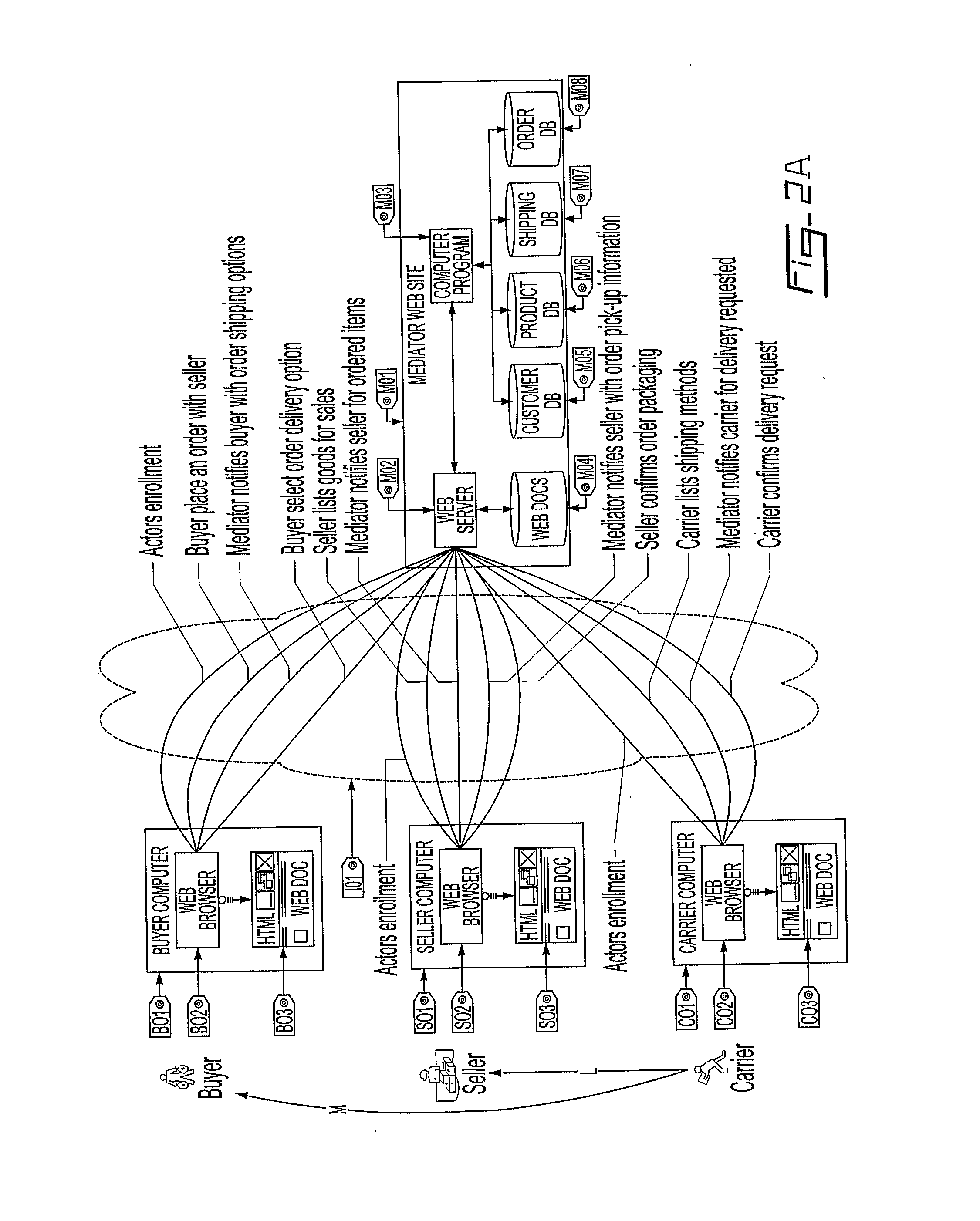Methods and Apparatus for Selling Shipping Services Through a Mediator's Web Site
a technology of mediators and web sites, applied in the field of electronic commerce, can solve the problems of shipping charges, majority of online shoppers abandoning shopping carts, and discerning, selective, demanding shoppers, and achieve reasonable and competitive shipping costs, reduce shopping cart abandonment, and be more lenien
- Summary
- Abstract
- Description
- Claims
- Application Information
AI Technical Summary
Benefits of technology
Problems solved by technology
Method used
Image
Examples
Embodiment Construction
[0057]FIG. 15 illustrates the steps of the invention from a high abstraction level. First, the shipping parameters are being defined 32, preferably by a mediator. Carriers provide then information about their respective shipping services to the mediator 34. Next, a buyer selects a product to be purchased from the mediator's Web site or from a third party's Web site 36. Thereafter, the buyer and the seller specify the shipping parameters through the mediator 38 and 40. Once the shipping parameters are specified, the mediator computes the available shipping services among all the shipping services specified by the carriers 42. Then, the mediator provides quotes for the computed available shipping services and presents it to the buyer 44. The latter selects then a suitable quote among these presented quotes 46. Based on the selected quote, a contract between the buyer and the seller is then concluded 48. Finally, the buyer and the seller conclude the purchase of the product 50.
[0058]FI...
PUM
 Login to View More
Login to View More Abstract
Description
Claims
Application Information
 Login to View More
Login to View More - R&D
- Intellectual Property
- Life Sciences
- Materials
- Tech Scout
- Unparalleled Data Quality
- Higher Quality Content
- 60% Fewer Hallucinations
Browse by: Latest US Patents, China's latest patents, Technical Efficacy Thesaurus, Application Domain, Technology Topic, Popular Technical Reports.
© 2025 PatSnap. All rights reserved.Legal|Privacy policy|Modern Slavery Act Transparency Statement|Sitemap|About US| Contact US: help@patsnap.com



